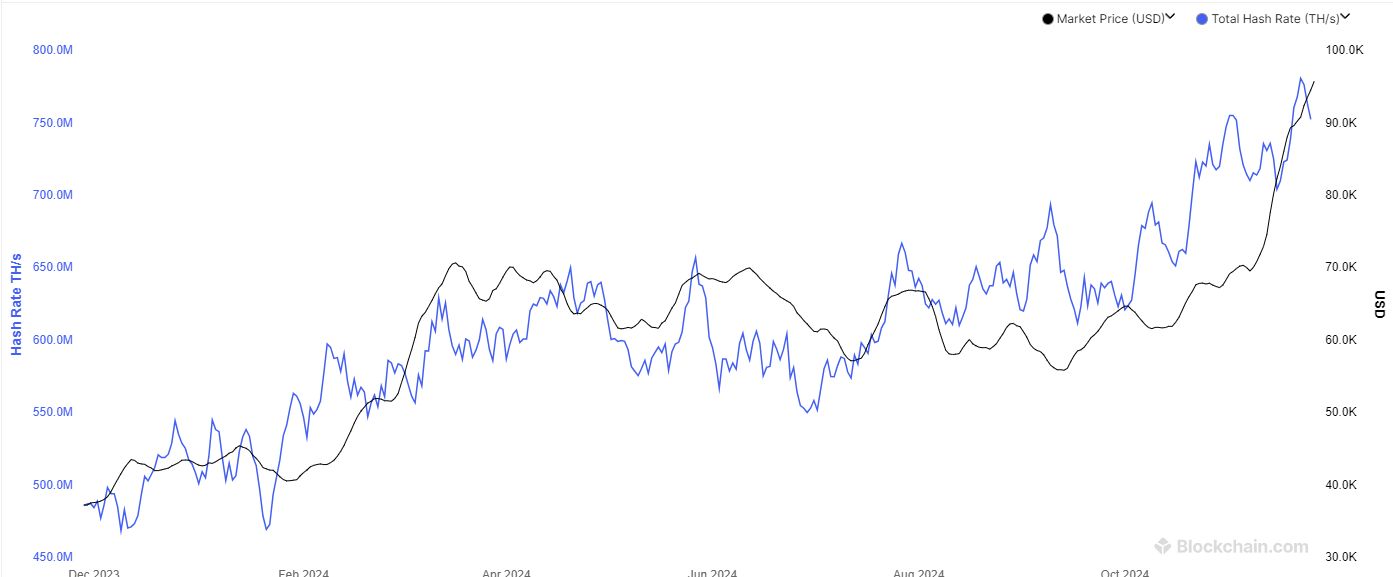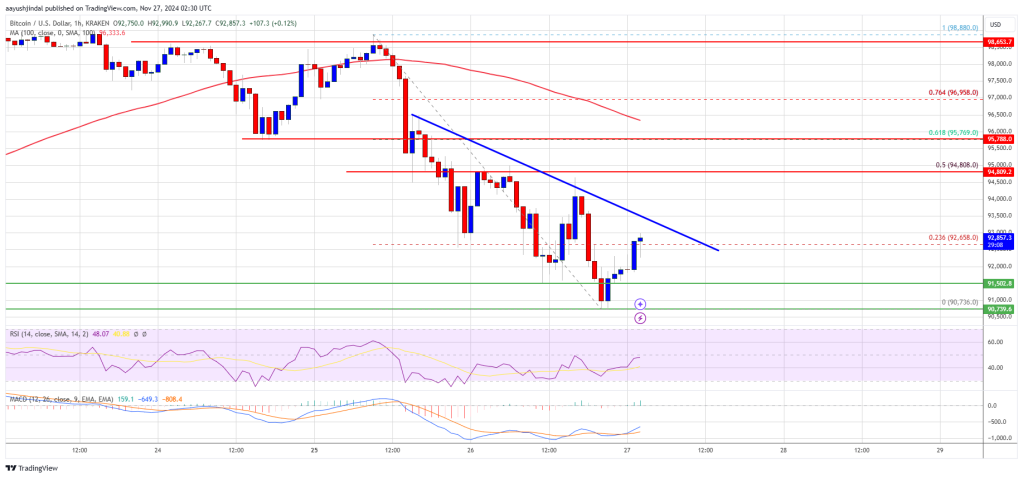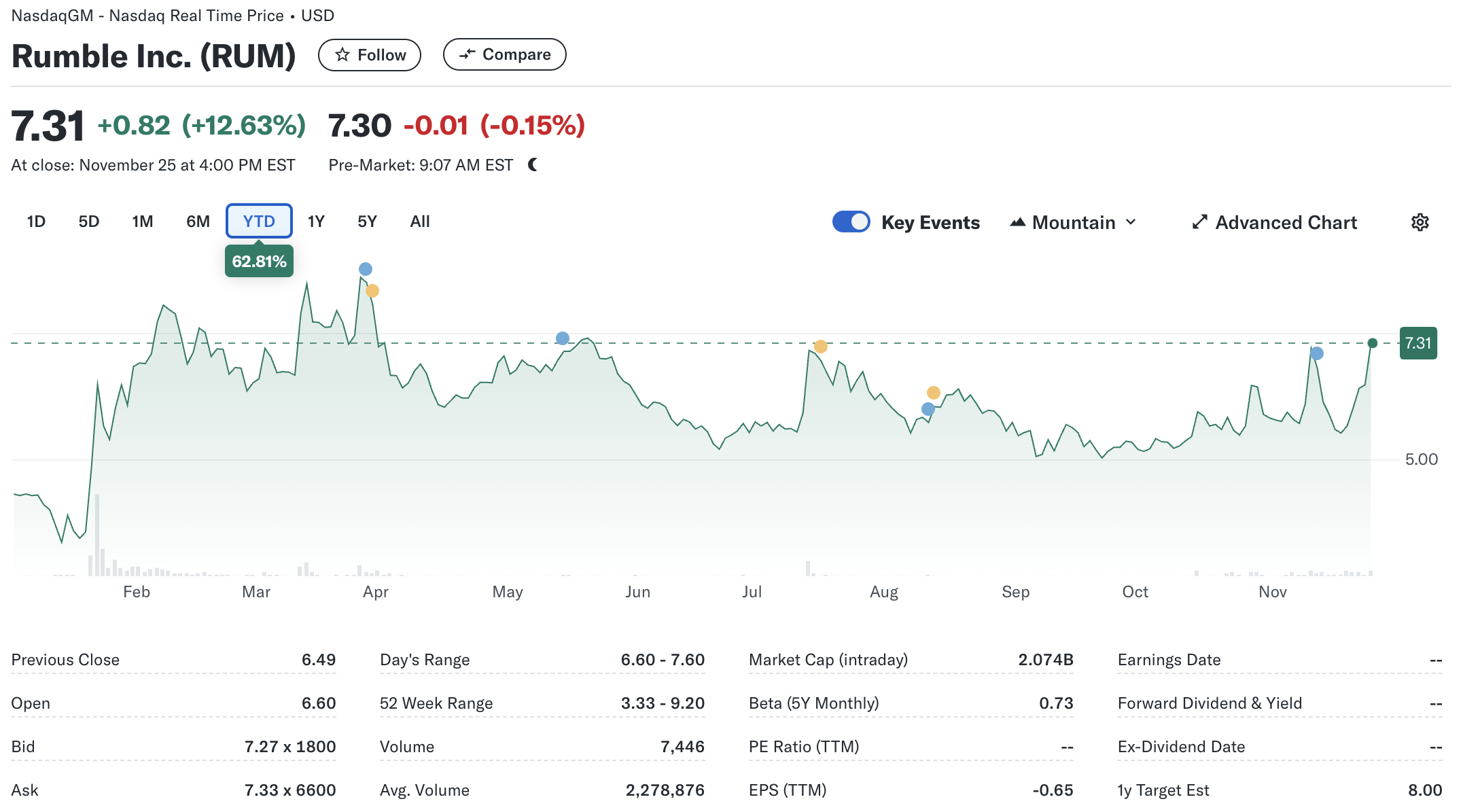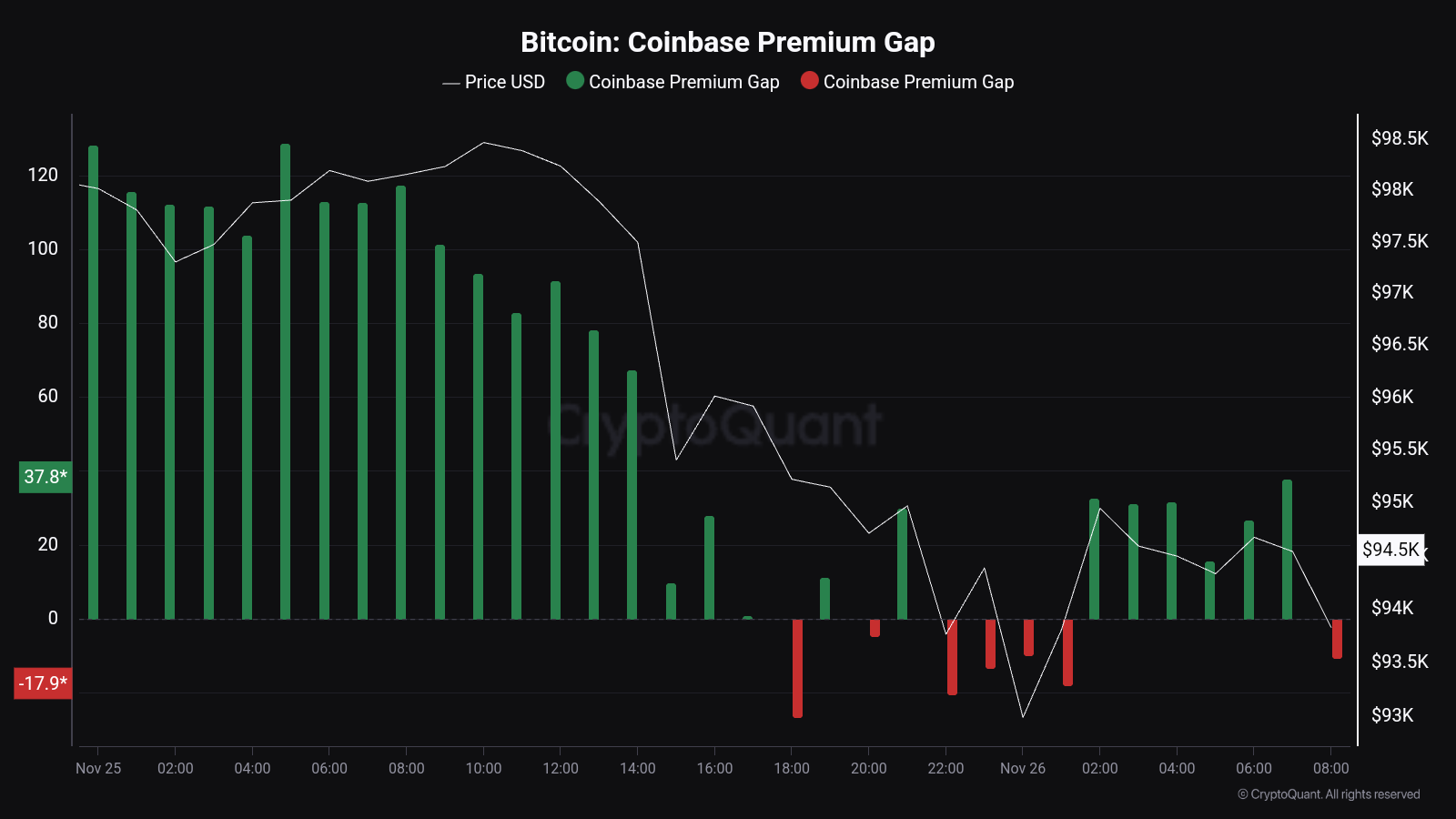Last week, the 1W Bollinger Bands in Bitcoin reached its tightest level ever. The volatility measuring tool typically doesn’t give any indication of direction, however.
Using historical data, we’ve taken all previous instances of extreme lows and the resulting direction — up and down — and discovered the success rate of the signal.
The Bollinger Bands are a complete trading system, designed by John Bollinger in the 1980s — an avid Bitcoin speculator. The tool uses a 20-period simple moving average (SMA) and two bands set at two standard deviations of the SMA.
As such, the “Bands” expand and contract based on volatility — a measure of how aggressively price moves within a time period. When the Bands tighten to extremes, it indicates a period of low volatility. This setup is called a Squeeze, which ultimately releases pent up energy and results in a large move. When price action picks up, the bands expand to represent the return of volatility.
According to Bollinger Band Width, a related tool designed to tell analysts how tight the bands on an easier to visually compare basis, the Bollinger Bands in BTCUSD are the tightest in the history of crypto. Notably, Ethereum and the TOTAL crypto market cap are also historically tight.
The technical indicator, however, doesn’t say anything about direction, only that something big is on the way. In the past, Bitcoin has broken out in either direction. But how many of these times were up? And how far did it climb?
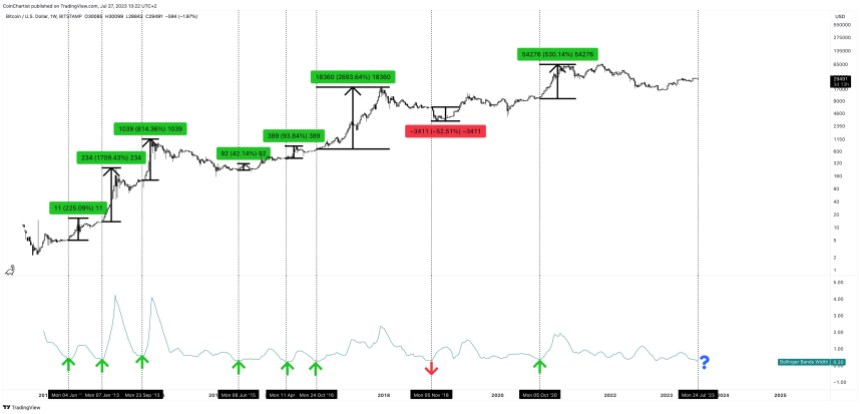
Past performance is never a guarantee of future results, but from historical price data we can better understand the behavior in BTCUSD after such low volatility phases.
Of the nine total instances the Bitcoin weekly Bollinger Bands got this tight, the top cryptocurrency by market cap rallied upward after upon breakout seven times. The average upward movement across all seven times is 872%. In contrast, the two down moves resulted in an average crash of 40%.<
Bitcoin falling 40% from here would take it back to $17,500 per coin, while a 872% move higher would take BTCUSD to over $280,000 per coin. The average of up and down moves resulted in a grand total of 669%, which would take the number one cryptocurrency to over $220,000. Considering the rule of diminishing returns, such a strong move is unlikely. However, the data speaks to the magnitude of the move that could occur, once volatility returns.
Using historical data, we’ve taken all previous instances of extreme lows and the resulting direction — up and down — and discovered the success rate of the signal.
Bollinger Band Width Reaches Historical Lows: What Does It Mean?
The Bollinger Bands are a complete trading system, designed by John Bollinger in the 1980s — an avid Bitcoin speculator. The tool uses a 20-period simple moving average (SMA) and two bands set at two standard deviations of the SMA.
As such, the “Bands” expand and contract based on volatility — a measure of how aggressively price moves within a time period. When the Bands tighten to extremes, it indicates a period of low volatility. This setup is called a Squeeze, which ultimately releases pent up energy and results in a large move. When price action picks up, the bands expand to represent the return of volatility.
According to Bollinger Band Width, a related tool designed to tell analysts how tight the bands on an easier to visually compare basis, the Bollinger Bands in BTCUSD are the tightest in the history of crypto. Notably, Ethereum and the TOTAL crypto market cap are also historically tight.
The technical indicator, however, doesn’t say anything about direction, only that something big is on the way. In the past, Bitcoin has broken out in either direction. But how many of these times were up? And how far did it climb?

Bitcoin Breakout Performance Analyzed: Average 669% ROI When Volatility Returns
Past performance is never a guarantee of future results, but from historical price data we can better understand the behavior in BTCUSD after such low volatility phases.
Of the nine total instances the Bitcoin weekly Bollinger Bands got this tight, the top cryptocurrency by market cap rallied upward after upon breakout seven times. The average upward movement across all seven times is 872%. In contrast, the two down moves resulted in an average crash of 40%.<
Bitcoin falling 40% from here would take it back to $17,500 per coin, while a 872% move higher would take BTCUSD to over $280,000 per coin. The average of up and down moves resulted in a grand total of 669%, which would take the number one cryptocurrency to over $220,000. Considering the rule of diminishing returns, such a strong move is unlikely. However, the data speaks to the magnitude of the move that could occur, once volatility returns.
As long as #Bitcoin remains above the weekly Bollinger Band basis –– a 20-period SMA –– I am bullish
Lose the mid-BB and then I’ll talk downside pic.twitter.com/knOo0oMW5M
— Tony “The Bull” (@tonythebullBTC) July 28, 2023
